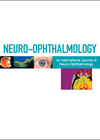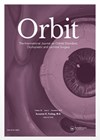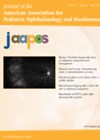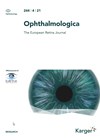
Journal Reviews
IVTA for diabetic macular edema and macular edema secondary to retinal vein occlusion: a meta-analysis
This meta-analysis aimed to compare the safety and efficacy of different doses of intravitreal triamcinolone acetonide (IVTA) for diabetic macular oedema (DME) and macular oedema (ME) secondary to retinal vein occlusion (RVO). A systematic literature search for randomised controlled trials...
Homonymous hemianopia due to stroke presenting symptoms and lesion locations
A retrospective case notes review was undertaken of patients diagnosed with homonymous hemianopia following a radiologically confirmed stroke. A total of 85 patients were identified by searching an electronic medical records system over an 11-year period. Data were extracted from...
Is virtual reality perimetry as reliable as static perimetry in detecting neurological visual field loss?
This study compares agreement between virtual reality perimetry (VRP) and static automated perimetry (SAP) in a variety of neuro-ophthalmological conditions. For this work the Order of Magnitude (OM) VR-based visual field assessment system was used which has been developed by...
Narrative literature review for intermittent exotropia
This is a narrative literature review on prevalence, terminology, risk factors, natural history and clinical characteristics for intermittent exotropia. A Medline search was conducted with no date restrictions up to September 2020 and collating English language studies. Prevalence was reported...
A modified technique for external DCR
The authors described a modified technique for external dacryocystorhinostomy (DCR) whereby the lacrimal sac is excised medially along its length using a 15mm blade. Following insertion of silicone stents, the remaining part of the anterior wall of the lacrimal sac...
Optical coherence tomography angiography usability in measuring iris vasculature in strabismus surgery
The purpose of this study was to investigate the use of optical coherence tomography angiography (OCTA) as a screening tool for anterior segment ischemia (ASI) in strabismus surgery. Optical coherence tomography angiography measurements were taken in 18 subjects. Twelve were...
Use of oral fluorescein angiography in a paediatric population
The authors report a retrospective records review of all patients who received an oral ultrawide fluorescein angiography (FA) over a 42-month period at a single children’s hospital. Data were extracted from the records including indication for FA, adverse events, pauses...
General population perceptions of severity of strabismus vs. angle of deviation and gender
The authors investigate whether the potential bias of gender, type of deviation, or size of deviation affected how strabismus was perceived among a general adult population. Eight photos were generated (head shots) of white people aged 25–30 years – purposive...
Social media use in reporting patient’s surgical experience
This study evaluated the risk of social media platforms (TikTok and Instagram) in understanding patients’ strabismus surgery experience and relative popularity of related posts. Both platforms were searched in 2022 for strabismus terms and posts were graded as positive or...
Outcome of secondary intraocular lens implantation-conventional 23- vs. modified 27-gauge vitrectomy port anchor fixation
This retrospective case study series evaluated the outcome of a secondary intraocular lens (IOL) implantation technique of a Carlevale IOL (Soleko IOL Division, Italy) with either a conventional 23- or a modified 27-gauge (-g) vitrectomy port used as anchor fixation....
Long-term outcomes of deep anterior lamellar versus penetrating keratoplasty for keratoconus
This is a retrospective consecutive and comparative case series of keratoplasties (228 deep anterior lamellar keratoplasties (DALKs) and 274 penetrating keratoplasties (PKs)) in a single centre by one surgeon in France, between 1993 and 2021. Graft survival was 96.7% at...
Comparison of structural and functional features in primary angle closure and open-angle glaucoma
In this large cross-sectional study, differences in structural and functional damage were assessed among patients with primary open-angle glaucoma (POAG) and primary angle closure glaucoma (PACG) with optical coherence tomography and reliable visual field testing. Two-hundred and eighty-three patients with...














